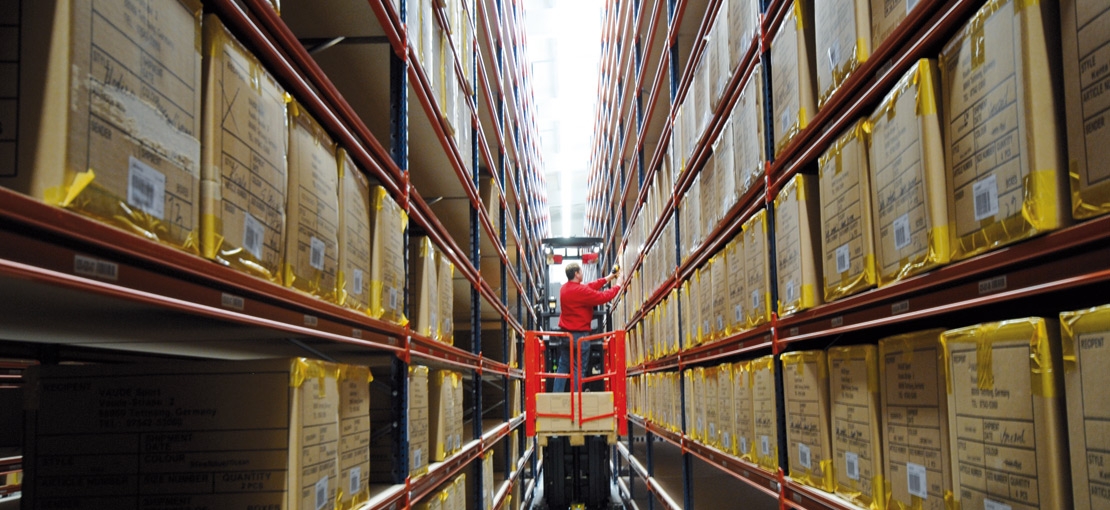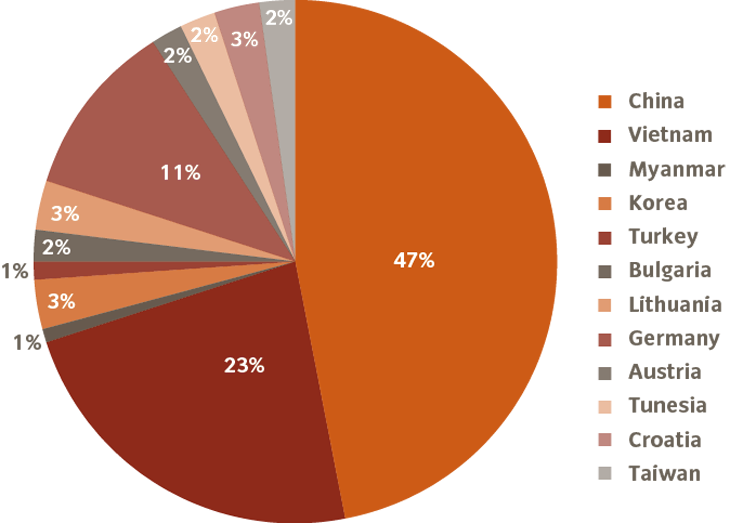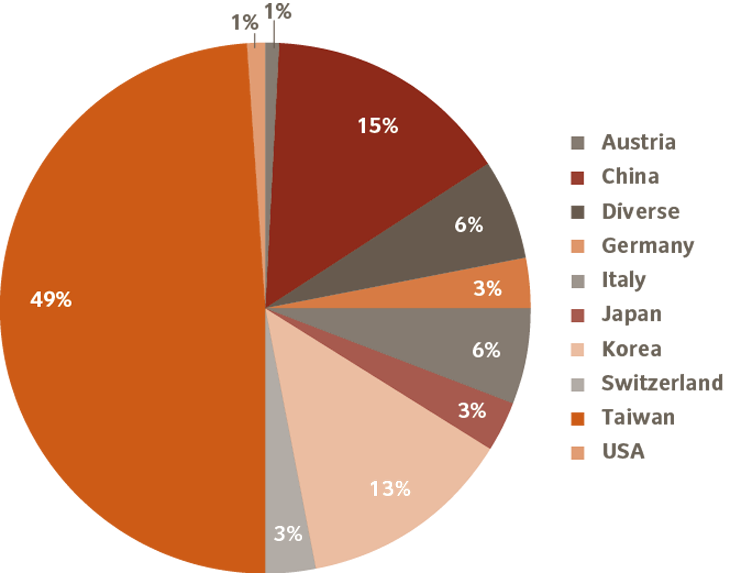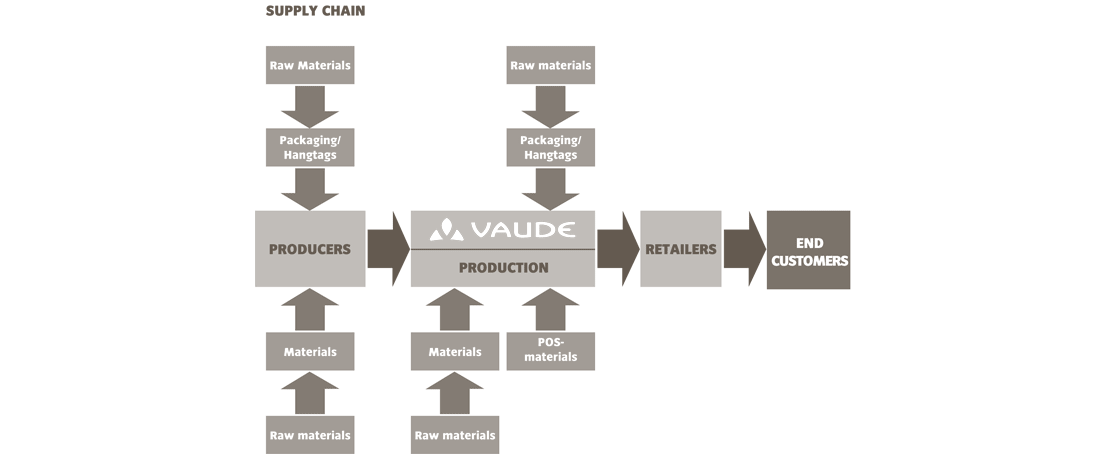
Complex supply chain
Production in Europe and Asia
VAUDE develops, manufactures and sells outdoor equipment such as performance apparel, backpacks and bags, shoes, sleeping bags, tents and camping accessories. The supply chain of outdoor products is complex, covering a wide international network and has numerous potential ecological and social problem areas.
Our direct business partners for product manufacturing are our producers: clothing manufacturers (also referred to as Tier 1) – the first VAUDE upstream level in the value chain. These companies manufacture finished VAUDE products from selected materials.
VAUDE’s supply chain and value chain
Labour-intensiv textil industry
In general, the textile and clothing industry is very labor intensive. In the outdoor industry, highly sophisticated and complex products are, as a rule, manufactured, requiring qualified personnel and modern machinery.
We require durability, highest functionality and quality from our products, and that they are made from materials that are as sustainable as possible. That is why we work closely with our producers and get involved in the selection of material suppliers as well.
Number and location of suppliers
In 2014 about 5 percent of our sewn products (measured by the overall expenditure on products) were produced with climate neutral manufacturing at our company headquarters in Obereisenbach. You can find more information about our Made-in-Germany Collection here.
Most of our products are made by external contractors and distributed by VAUDE. VAUDE traditionally cultivates business partnerships and always works directly with its producers. The majority of our 61 producers have their manufacturing facilities in China and Vietnam.

Note: The figures are based on the year 2014.
More information, how VAUDE works on social standards in the production, can be found here.
Material manufacturing
The second VAUDE upstream level of the value chain (“Tier 2”) is created by the manufacturer. These produce, for example, various woven or knit fabrics.
For this purpose, they purchase fibers and components such as dyes – from other suppliers. The woven or knit fabric is then “finished” with chemically or mechanically processes such as dyeing, laminating, applying substances for UV protection and water resistance.
The yarns are made from fibers or synthetic granulate. Last but not least, plastics are primarily made from petroleum, so that the extraction and processing of petroleum is at the very beginning of the textile supply chain. Natural fibers are agriculturally cultivated or obtained from animals.
This report involves both upstream supply chain levels: producers and material manufacturing.
Primarily nominated material suppliers
For the majority of its products, VAUDE specifies which materials such as fabrics, buttons, rivets, buckles, as well as packaging materials and labels that suppliers should use and in which quality. In total, VAUDE has nominated about 150 material manufacturers.
Our producers sometimes rely on local suppliers, especially for small parts. We cannot summarize the exact number of local suppliers. However, all of our producers agree to comply with the VAUDE quality criteria including limit values for pollutants for all materials used.
Number and location of our material suppliers
Most of VAUDE material suppliers are based in Asia, especially in Taiwan, China and South Korea. But we also have material suppliers from Europe, for example from Germany, Italy and Switzerland. For the on-site production in Obereisenbach we have around 48 suppliers. Most have their headquarters in Germany as well.

Note: The numbers are based on the Winter and Summer 2014 Collections. The percentage of local suppliers that were not nominated by VAUDE is estimated and listed in the graphic as “diverse”.
Here you find information about what VAUDE does to achieve high environmental standards for the materials suppliers, in particular with the bluesign® standard.
Complex manufacturing of yarn from polyester / polyamide

A spinnable material is produced from oil using a chemical process. It is a syrup-like, viscous mass. This mass is pressed by a large extruder through small holes of a spinneret, like a large pasta machine. This process is called melt spinning.
In order to obtain sufficient solidity, the resulting filaments are further stretched, that is, the molecules are aligned in parallel. The continuous fibers can then be wound up and also directly processed further.
Here you get information about which markets and over which channels VAUDE distributes its products.
| GRI: | G4-12 |





